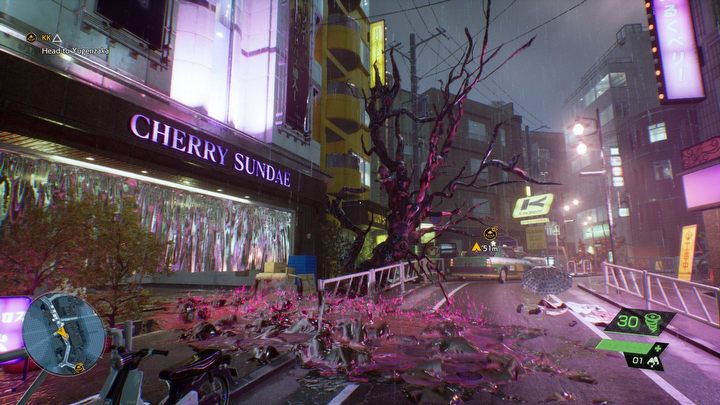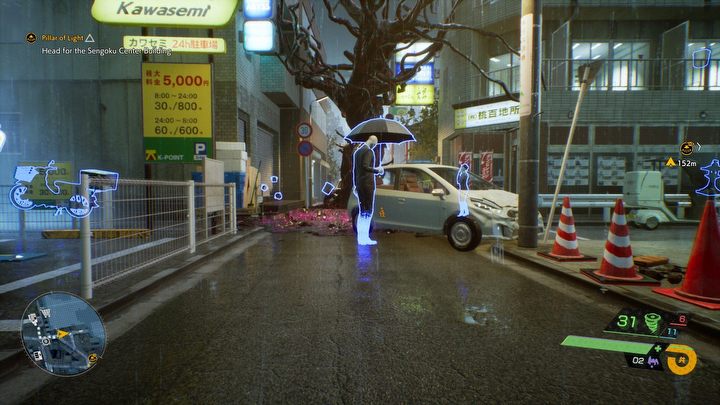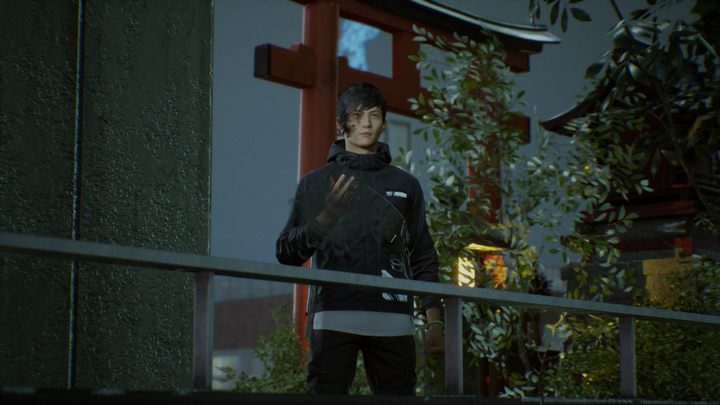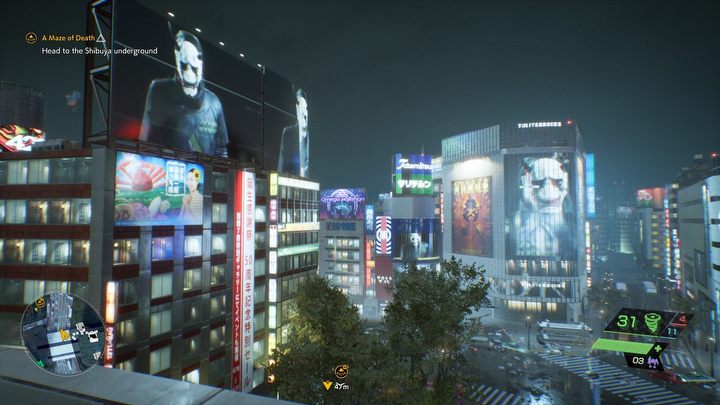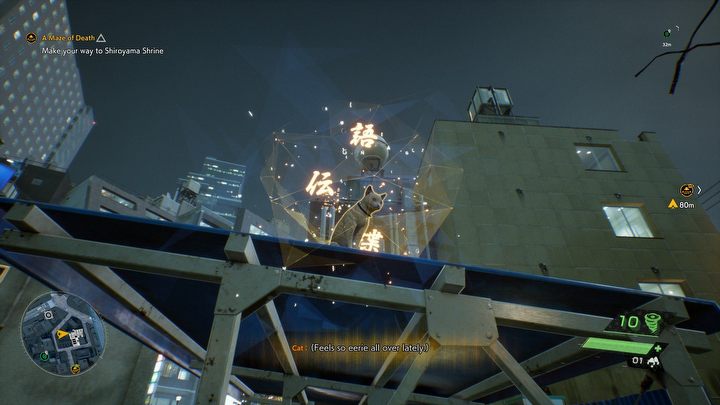Ghostwire Tokyo Review: Hauntingly Beautiful
Ghostwire Tokyo takes inspiration from Japanese mythology and culture to brilliantly combine horror elements into an open-world action RPG experience that is incredibly satisfying to play.
The review is based on the PC version. It's also relevant to PS5 version(s).

Ghostwire Tokyo is an original IP developed by Tango Gameworks, creators of The Evil Within, and published by Bethesda, the same studio that brought incredibly popular games series like The Elder Scrolls and Fallout to the world. Those are certainly some big names to live up to and thankfully Ghostwire Tokyo manages to shrug off the weight of its predecessors without issue. What could have easily become yet another bloated open-world full overloaded with meaningless side-quests and collectibles, actually manages to have a unique style and worthwhile exploration, all without feeling overwhelming.
While it might certainly seem like a horror game at first glance, with the spooky spirits and creepy enemy designs, it doesn’t really play like one. While the enemies and the story do give the game an overall creepy tone, it is more of an action RPG than anything else. There are certainly a few jump-scares, from tough enemies catching you off guard to freaky illusions taking over the screen as you walk down a hallway. But compared to other horror games like Outlast or even some of the Resident Evil games, Ghostwire Tokyo doesn’t really compare.
Bethesda and Tango Gameworks have come together to create an excellent example of a modern single-player open-world action RPG. Ghostwire Tokyo is dripping with style and substance, but if anything else starts dripping that could be because your house is haunted now. There’s a lot to talk about with this game, so let’s jump right in.
Wandering the Dark Streets
Something that can easily make or break a video game that focuses on exploring an open world or at least immersing the player in a specific environment, is how that world looks. Ghostwire Tokyo knocks this section out of the park. Wandering the dark streets of Tokyo with no other people around not only gives the game its overall creepy tone but also has a hauntingly beautiful aesthetic. Multi-color lights splash across the city, selling random products to no one, and the eerie ambiance of raindrops and music left on in a restaurant or club makes exploring this game so much more immersive.
- An open world worth exploring;
- Satisfying action and combat;
- Rich details inspired by real-world mythology.
- Focus on the story might not fit everyone’s style;
- Not quite a full-on horror game.
The only things that feel out of place are the things that should, like the wandering spirits known as Visitors that resemble actual humans in nearly every way. Young schoolgirls stand in a circle and dance or chat, then as you take a closer look you realize they are headless. Then there are the well-dressed, umbrella-toting gentlemen that can be discovered pushing buttons at an ATM or looking in the windows of a shop as if they are trying to understand what it is about these things that humans are interested in. This closeness to reality combined with such a stark detachment from it gives this game an impressively subtle creepiness.
Every detail in this game seems well thought out and carefully considered. Nearly every corner of the game at least has a small detail tucked away, waiting to be discovered. For example, I climbed to the top of a building, thinking I needed to go that way for the story, only to realize it was the building next door. But when I got to the top I found empty clothes next to a lunch box and a hard helmet, which immediately told the story of a construction worker enjoying lunch alone on top of the building when the disaster struck. There was no reason for me to be on top of that building, no expectation for me to find this small detail, but it was there nonetheless.
Visually, Ghostwire Tokyo is a delight. The graphics feel appropriate to what modern games should strive for, and it’s clear that a lot of extra effort went into the game’s style and aesthetic, which elevates the entire experience. It’s also worth noting that while many open-world games can fill the space with as much interactable content as possible, Ghostwire Tokyo never feels that way. There is space to breathe between encounters and the list of collectibles doesn’t feel insurmountable, meaning that it’s easy and enjoyable to take this game at your own pace, whether that’s wandering aimlessly, chasing the main story, or finding absolutely everything there is to find.
Dealing With Visitors
Ghostwire Tokyo, thankfully, isn’t just about exploring a creepy deserted Tokyo. The Visitors, those responsible for the mass disappearance, will put up a fight. The protagonist, Akito, is on a mission to save his hospitalized sister from those that orchestrated this disaster, and the spirit of a supernatural detective, KK, helps out by sharing Akito’s body and lending his supernatural powers.
KK gives Akito access to an ability called ethereal weaving, which includes three types of ranged attacks, and a shield. To fend off the attacking Visitors, Akito utilizes wind, water, and fire attacks that all deal damage in different ways. The controls for this are generally very solid and intuitive for anyone familiar with action games, but the shield is automatically mapped to tapping the mouse wheel, which can feel awkward when trying to swap between that and firing elemental blasts in combat.
Landing hits will eventually reveal the Visitor’s spirit core, essentially their “heart,” which Akiro can then rip from the body to destroy the Visitor. One on one it’s easy to take down the Visitors, but take on too many at once and they can overwhelm you. This adds a fun stealth element to combat where the player does their best to take out as many enemies as possible before actively engaging in combat.
An Emphasis on Story
Every enemy also has origins in Japanese culture, mythology, and urban legend, giving even the weakest enemies context and meaning. Not only is there a satisfying depth to exploration in Ghostwire Tokyo, but there is a lot to learn about the game and Japanese culture, particularly the paranormal. Yokai such as the crow-like tengu help Akito grapple to higher places and the kappa can be found messing with stray human spirits. Meanwhile, the clever tanuki hide in plain sight, transformed into various objects (look for the tails) acting as collectibles, not unlike the Koroks in The Legend of Zelda: Breath of the Wild.
What separates Ghostwire Tokyo from other Bethesda games like Skyrim or Fallout 4, is the story. There is much more of an emphasis on the linear story progression in this game than in some other open-world titles. Following the story does open the world further and unlock other abilities, but there is a limit on what can be accomplished without at least keeping a tab on the story progression.
Ghostwire Tokyo brings elements of an action RPG, a horror game, and an open-world game together with brilliant results. The environments and the visuals are dripping with style and substance, with nearly everything in the game having a real-life inspiration from myths to urban legends. While it might not quite be the horror game some fans are looking for, Ghostwire Tokyo delivers a fun and engaging experience from start to finish.
The story is not bad, it’s full of mystery and action, but it will depend on what kind of experience the player prefers. Some players will enjoy following the story, while others will prefer to wander around Tokyo and find what secrets there are to find. While both can distract from the other, they both also encourage the other. Wandering to find secrets prepares the player for the challenges that the story offers, and the story gives the player ample motivation to explore and help out the lost spirits scattered around the city. Plus there are plenty of great short stories to discover in many of the game’s side missions.
Conclusion
It’s fun to shoot ghosts. There I said it. It’s certainly not the most challenging game, but it does feel very good to pull out all the stops against a terrifying, scissor-wielding spirit and ultimately pull their heart out and crush it. It’s almost cathartic to stare these horrors in the face and know you have the strength to destroy them.
Don’t just take my word for it, trust in the talented creators that worked on this game. Shinji Mikami, co-creator of the Resident Evil series, serves as executive director of Ghostwire Tokyo, alongside Shinichiro Hara, who worked specifically on the combat of 2016’s Doom. Ikumi Nakamura, known for Okami and the original Bayonetta, served as creative director during the initial development of Ghostwire Tokyo, but unfortunately had to step back midway through development. With this amount of talent, it’s hard not to make a good game.

Our reviews are featured on Metacritic.
Ghostwire Tokyo brings elements of an action RPG, a horror game, and an open-world game together with brilliant results. In an industry so often dominated by franchises and well-known series, it’s exciting to see an original and unique triple-A title shine through. If you’ve been looking for something new and fun to dive deep into, look no further.
Ghostwire: Tokyo
Ghostwire Tokyo Review: Hauntingly Beautiful
Ghostwire Tokyo takes inspiration from Japanese mythology and culture to brilliantly combine horror elements into an open-world action RPG experience that is incredibly satisfying to play.

